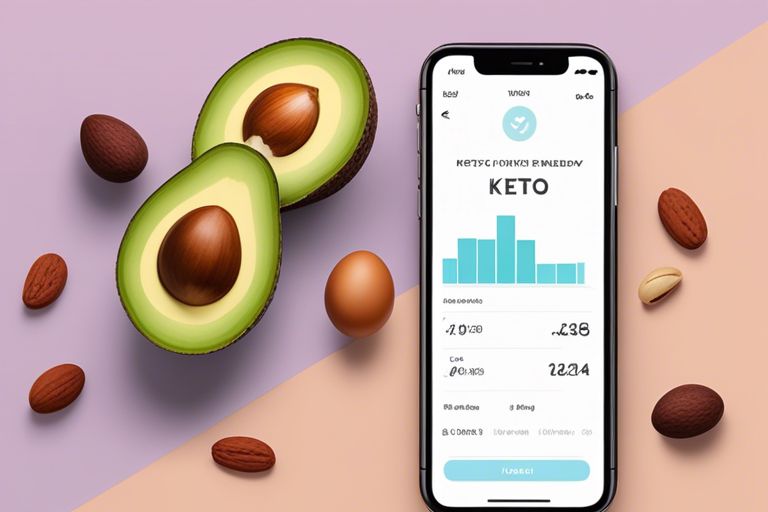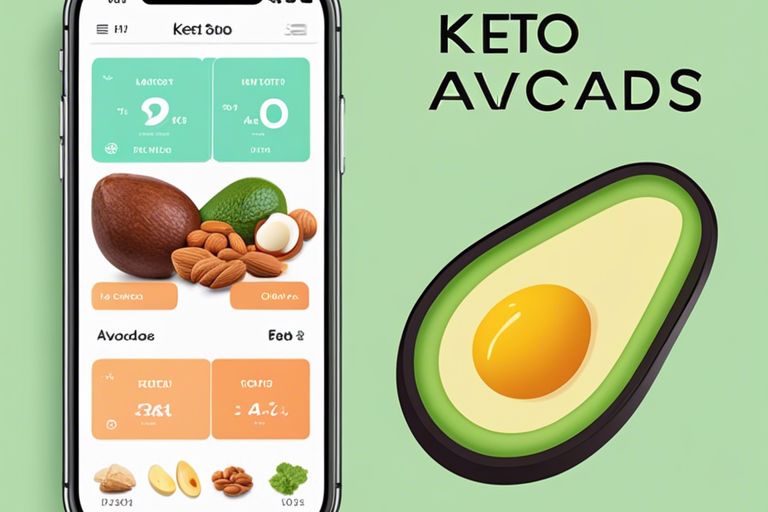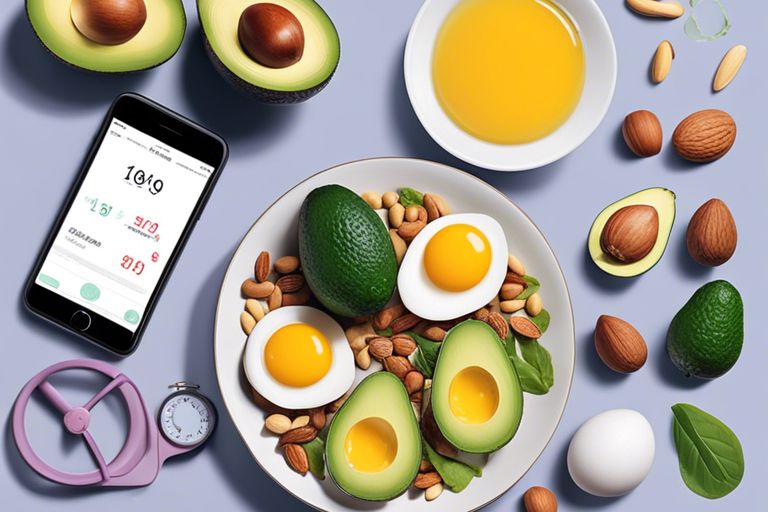Expedite your journey to ketosis with these proven methods that will quickly shift your body into fat-burning mode. When embarking on a ketogenic diet, it’s essential to understand the most effective strategies to enter into ketosis as efficiently as possible. By implementing a combination of specific dietary adjustments, targeted exercise routines, and supplementary support, individuals can accelerate the process of reaching ketosis and experience the numerous benefits of this metabolic state sooner rather than later. In this blog post, we will explore some of the fastest routes to achieving ketosis and the steps you can take to help your body transition into this highly efficient fat-burning state.
Key Takeaways:
- Limit carbohydrate intake: Consuming less than 50 grams of carbohydrates per day can help your body enter and maintain ketosis more quickly.
- Engage in high-intensity exercise: Intense physical activity can deplete glycogen stores in the body, allowing for a faster transition into ketosis.
- Consider intermittent fasting: Fasting for short periods of time can help deplete glycogen stores and jumpstart the ketosis process.

Dietary Adjustments for Rapid Ketosis
If you’re looking to quickly achieve ketosis, making certain dietary adjustments is essential. By strategically regulating your macronutrient ratios and choosing the right foods, you can jumpstart your body into ketosis in no time.
The Importance of Macronutrient Ratios
Dietary adjustments for rapid ketosis primarily focus on manipulating the macronutrient ratios in your diet. In a typical ketogenic diet, the emphasis is on consuming high amounts of healthy fats, moderate protein, and very low carbohydrates. By adhering to these specific ratios, your body will shift its primary energy source from glucose to fat, thereby inducing ketosis.
Foods to Favor and Avoid
Importance is placed on favoring foods that are high in healthy fats such as avocados, olive oil, and nuts, while avoiding those high in carbohydrates, including grains, fruits, and starchy vegetables. Additionally, processed foods, sugar-laden snacks, and sugary beverages should be eliminated from your diet to expedite the onset of ketosis. By carefully selecting the right foods, you can effectively initiate the metabolic state of ketosis.
Foods high in healthy fats, such as avocados and nuts, should constitute a major part of your diet, while steering clear of carbs and processed foods is crucial for achieving rapid ketosis. By making these dietary adjustments, you can significantly impact the speed at which your body enters ketosis, allowing you to reap the benefits of this metabolic state sooner rather than later.

Fasting Strategies
Clearly, fasting is one of the quickest ways to achieve ketosis. By abstaining from consuming any food or drink other than water for a certain period of time, the body is forced to burn through its glycogen stores and transition into a state of ketosis. There are several fasting strategies that can help expedite this process.
Intermittent Fasting
An effective fasting strategy for achieving ketosis is intermittent fasting, which involves cycling between periods of eating and fasting. This can be done by restricting eating to a specific window of time each day, such as only consuming food between 12pm and 8pm, and fasting for the remaining 16 hours. This approach can help deplete glycogen stores and shift the body into ketosis more quickly.
Extended Fast and Its Impact
Extended fasting, typically defined as fasting for 24 hours or more, can have a significant impact on achieving ketosis. Extended fasting forces the body to deplete its glycogen stores and switch to burning fat for fuel, which can expedite the transition into ketosis. This can be a more challenging fasting strategy, but it can yield rapid results in terms of achieving ketosis.
Any fasting strategy should be approached with caution and may not be suitable for everyone. It’s important to consult with a healthcare professional before embarking on an extended fast, especially for individuals with underlying health conditions or those taking medication. Additionally, it’s crucial to stay well-hydrated and ensure proper nutrition during fasting periods to support overall health and well-being.

Exercise and Ketosis
Not only does exercise contribute to overall physical and mental health, but it can also be a powerful tool in achieving and maintaining ketosis. By incorporating specific types of exercise and balancing it with proper nutritional intake, you can optimize your body’s ability to enter and remain in a state of ketosis.
Types of Exercise to Induce Ketosis
On the journey to ketosis, certain types of exercise are particularly effective in promoting the production and utilization of ketones. These include:
- High-Intensity Interval Training (HIIT)
- Resistance Training
- Aerobic Exercise
- Flexibility and Mobility Work
- Low-Intensity, Steady-State Cardio
The combination of these exercises can help increase the body’s demand for energy, which can lead to a greater reliance on ketones for fuel.
Balancing Exercise with Nutritional Intake
For individuals pursuing ketosis, striking the right balance between exercise and nutritional intake is crucial. While exercise can promote the production of ketones, inadequate fueling can lead to muscle fatigue and decreased physical performance. Plus, it’s important to consume a diet that supports both your exercise routine and your metabolic shift towards ketosis. This means prioritizing high-quality sources of fats and proteins while minimizing carbohydrates, especially refined sugars and grains.
Plus, it’s essential to stay well-hydrated and replenish electrolytes, especially when engaging in more intense forms of exercise. Balancing your nutritional intake with your exercise regimen will not only support your efforts to achieve ketosis but also enhance your overall well-being.
Supplements and Ketone Precursors
To achieve ketosis quickly, supplements and ketone precursors can be incredibly beneficial. They can help jumpstart the process and support your body as it transitions into a ketogenic state. There are various options available, including exogenous ketones and MCT oil, each with its own unique benefits.
Exogenous Ketones
The use of exogenous ketones can provide a quick and efficient way to elevate your blood ketone levels and induce a state of ketosis. These ketones are available in the form of ketone salts or ketone esters, and they can be ingested to rapidly increase ketone levels in the body. The rapid rise in ketone levels can help facilitate the transition into ketosis, making it a useful tool for those looking to enter this metabolic state as quickly as possible.
MCT Oil and Its Role in Ketosis
On the other hand, MCT oil is a popular supplement among those following a ketogenic diet. MCT oil contains medium-chain triglycerides, which are fats that can be rapidly converted into ketones by the liver. Because of this, MCT oil can help increase ketone production in the body, supporting the process of achieving and maintaining ketosis. Incorporating MCT oil into your ketogenic regimen can provide a steady source of ketone precursors, aiding in the body’s transition into ketosis.
Exogenous ketones and MCT oil are both valuable tools for those seeking to achieve ketosis quickly. When used in conjunction with a well-formulated ketogenic diet, these supplements can support the body’s metabolic shift towards utilizing fat for fuel, ultimately aiding in the swift attainment of ketosis.
FAQ: Quickest Ways to Achieve Ketosis
Q: What is ketosis?
A: Ketosis is a metabolic state in which the body burns fat for fuel instead of carbohydrates, leading to the production of molecules called ketones.
Q: What are the quickest ways to achieve ketosis?
A: The quickest ways to achieve ketosis include drastically reducing carbohydrate intake, increasing fat intake, and incorporating fasting or exercise to deplete glycogen stores.
Q: How can I reduce carbohydrate intake to achieve ketosis quickly?
A: To reduce carbohydrate intake, focus on consuming low-carb, non-starchy vegetables, and avoiding high-carb foods like grains, sugars, and starchy vegetables. Additionally, monitoring macronutrient intake and utilizing tools like the ketogenic diet can help you track and limit carb intake.
Q: What are the best sources of fats to increase fat intake for ketosis?
A: Healthy sources of fats for increasing fat intake include avocados, nuts and seeds, coconut oil, olive oil, fatty fish, and full-fat dairy products. These sources can provide the necessary fat content for a ketogenic diet.
Q: Does fasting help achieve ketosis quickly?
A: Yes, fasting can help achieve ketosis quickly by depleting glycogen stores and forcing the body to switch to burning fat for fuel. Intermittent fasting or extended fasts can be effective strategies for promoting ketosis.
Q: How does exercise contribute to achieving ketosis rapidly?
A: Exercise can help achieve ketosis rapidly by depleting glycogen stores and increasing the body’s demand for energy, promoting the utilization of fat for fuel. High-intensity interval training (HIIT) and resistance training are especially effective for promoting ketosis through exercise.
Q: Are there any supplements that can aid in achieving ketosis quickly?
A: Yes, exogenous ketone supplements can help raise blood ketone levels and facilitate the transition into ketosis. Additionally, electrolyte supplements can support the body’s adaptation to using ketones for fuel during the initial stages of a ketogenic diet.

Leave a Reply